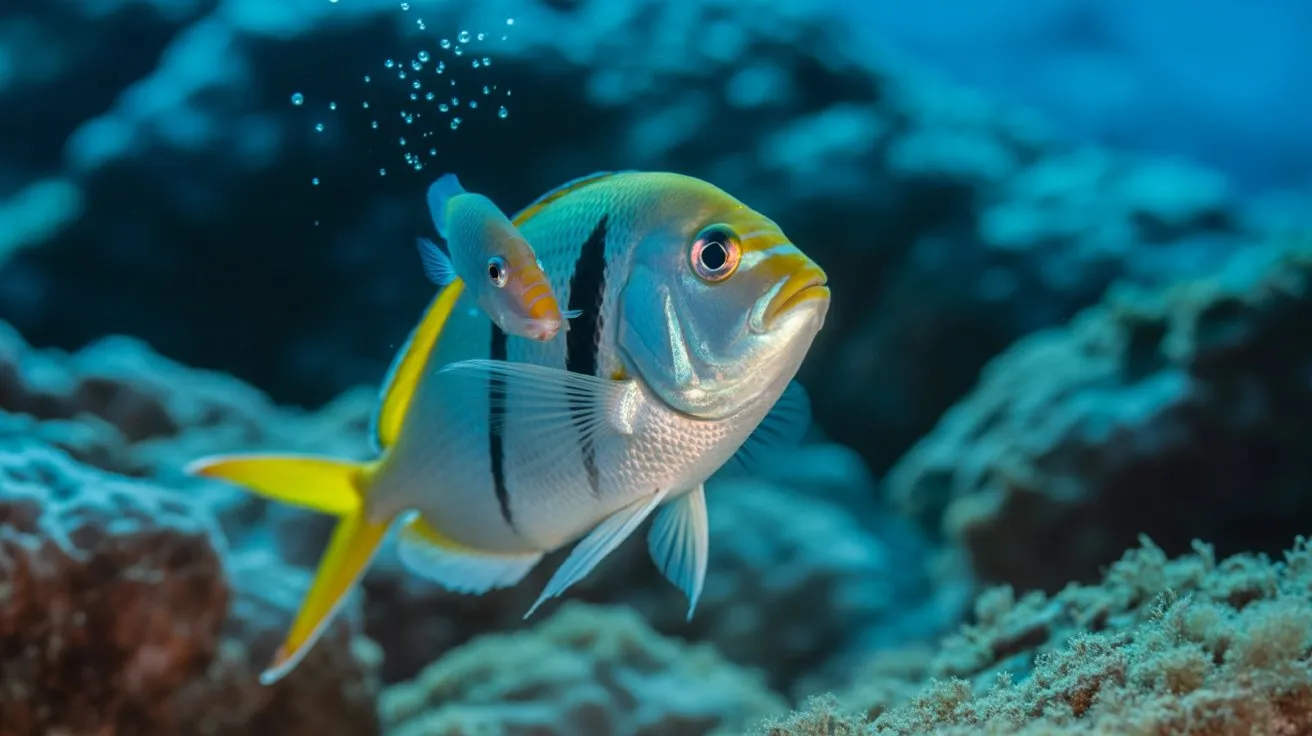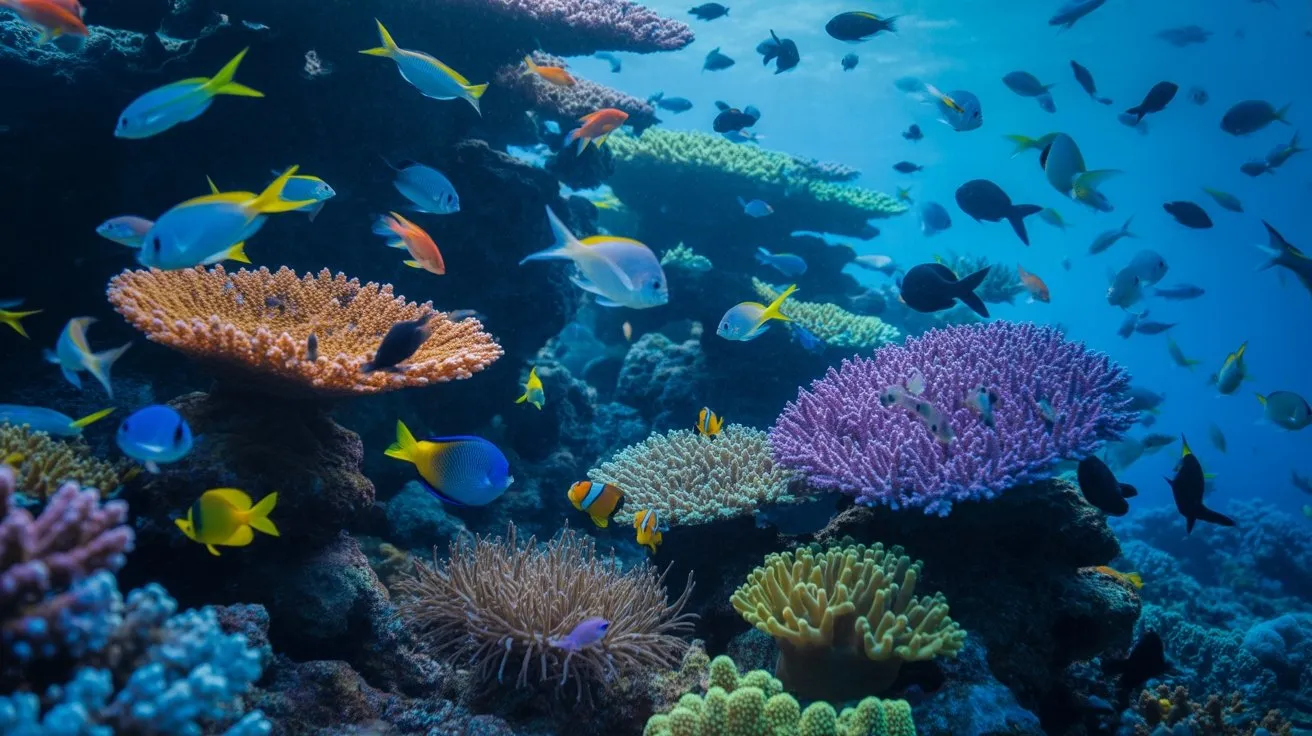What if you could witness nature’s most sophisticated healthcare system operating beneath the waves? You’ll find that cleaner fish species like *Labroides dimidiatus* establish specialized cleaning stations where they perform meticulous parasite removal services for client fish. These symbiotic partnerships aren’t simply casual interactions—they’re complex behavioral exchanges governed by precise recognition signals and mutual benefit calculations. Yet the mechanisms underlying these underwater negotiations reveal surprising parallels to economic principles you’d never expect.
The Science Behind Cleaner Fish Behavior
When you observe cleaner fish stations on coral reefs, you’re witnessing a sophisticated behavioral phenomenon driven by neurochemical pathways and evolutionary adaptations.
Dopamine and serotonin regulate cleaner fish motivation and decision-making during client interactions. You’ll notice these fish exhibit cognitive flexibility, adjusting cleaning strategies based on client species, size, and parasitic load.
Tactile stimulation from cleaning triggers oxytocin release in clients, reinforcing cooperative behavior.
Neural mapping studies reveal specialized brain regions processing visual and chemical cues that identify potential clients. You’re observing learned behaviors transmitted through social learning networks.
Cleaners demonstrate self-recognition abilities and strategic planning, prioritizing high-value clients over smaller ones.
This complex behavioral matrix emerges from genetic predispositions refined through environmental pressures, creating the highly efficient mutualistic relationships you witness underwater.
Major Species of Cleaner Fish and Their Characteristics
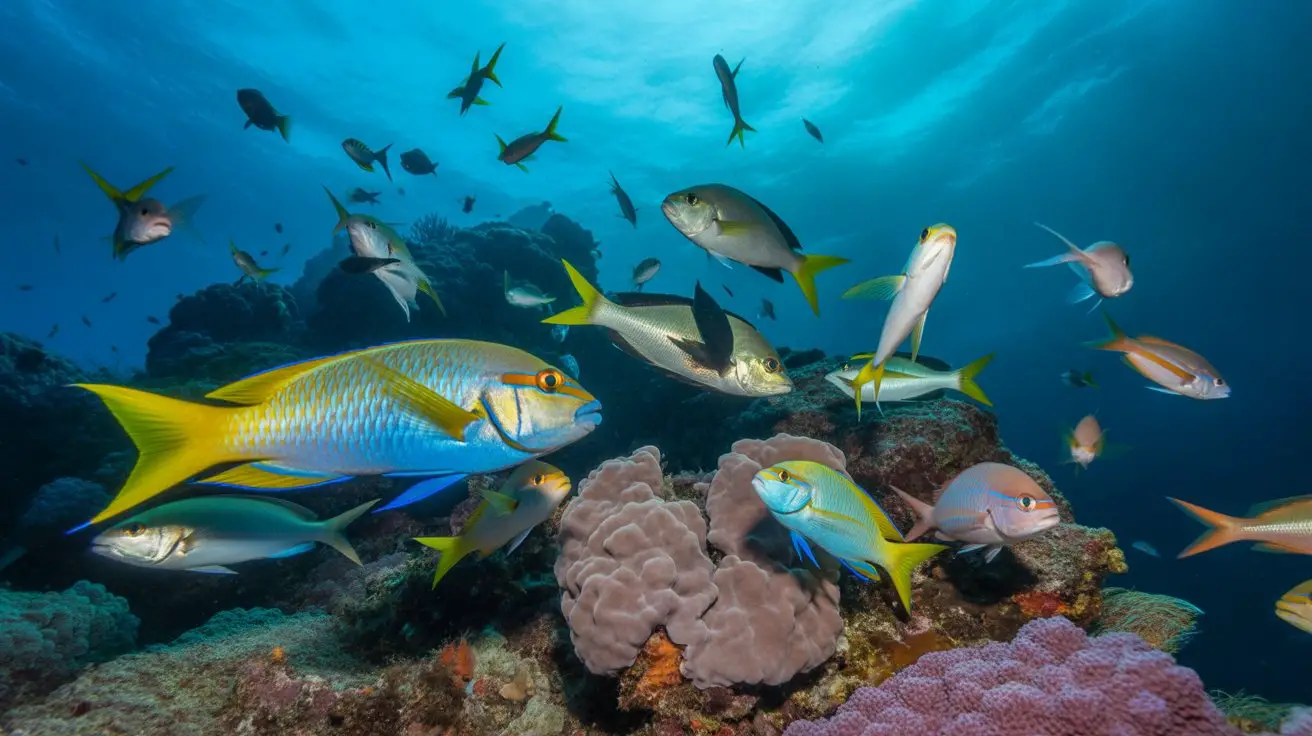
Across tropical and subtropical marine ecosystems, you’ll encounter several distinct cleaner fish species, each exhibiting specialized morphological and behavioral adaptations for their ecological niche. These species demonstrate convergent evolution in developing cleaning behaviors despite phylogenetic differences.
| Species | Body Length | Primary Cleaning Behavior |
|---|---|---|
| Labroides dimidiatus | 8-14 cm | Ectoparasite removal, mucus consumption |
| Gobiosoma genie | 3-5 cm | Crevice cleaning, micro-parasite extraction |
| Thalassoma bifasciatum | 12-20 cm | Large client servicing, dead tissue removal |
You’ll observe that cleaner wrasses possess elongated bodies facilitating maneuverability around client fish, while cleaner gobies exhibit compressed profiles enabling access to confined spaces. Their terminal mouths contain specialized dentition for precise parasite extraction. Behavioral repertoires include ritualized dancing displays signaling cleaning availability and client recognition patterns ensuring species-specific service delivery within established cleaning stations.
Cleaning Stations: Underwater Service Centers
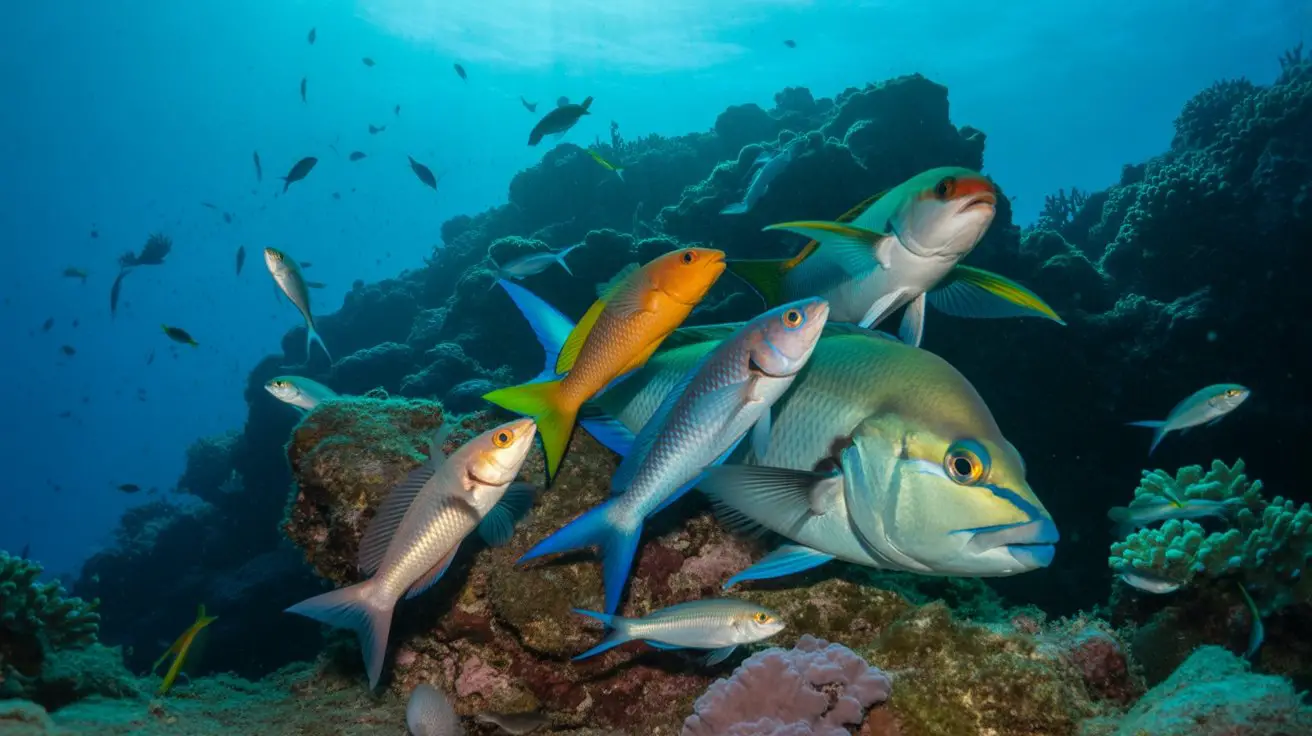
Throughout coral reefs and rocky outcrops, you’ll discover that cleaning stations function as sophisticated marine service hubs where predictable spatial-temporal dynamics govern interspecific interactions.
These fixed territories exhibit precise microhabitat selection criteria: ideal water flow, strategic positioning for predator detection, and substrate composition facilitating cleaner fish visibility.
You’ll observe that client fish demonstrate stereotypical approach behaviors, adopting specific postures signaling cleaning requests. Cleaners respond through systematic inspection protocols, targeting ectoparasites, dead tissue, and mucus accumulation.
Station productivity correlates with cleaner density, territorial boundaries, and temporal availability patterns. Research demonstrates that established stations process 2,000+ client visits daily, with service duration averaging 30-137 seconds per interaction.
You’ll notice that territorial cleaners maintain consistent operational schedules, enhancing energy expenditure while maximizing parasite removal efficiency across diverse client species. Additionally, these interactions are crucial for coral reef biodiversity, as they help maintain the health of both cleaner and client fish populations.
The Client Queue: Which Fish Seek Cleaning Services
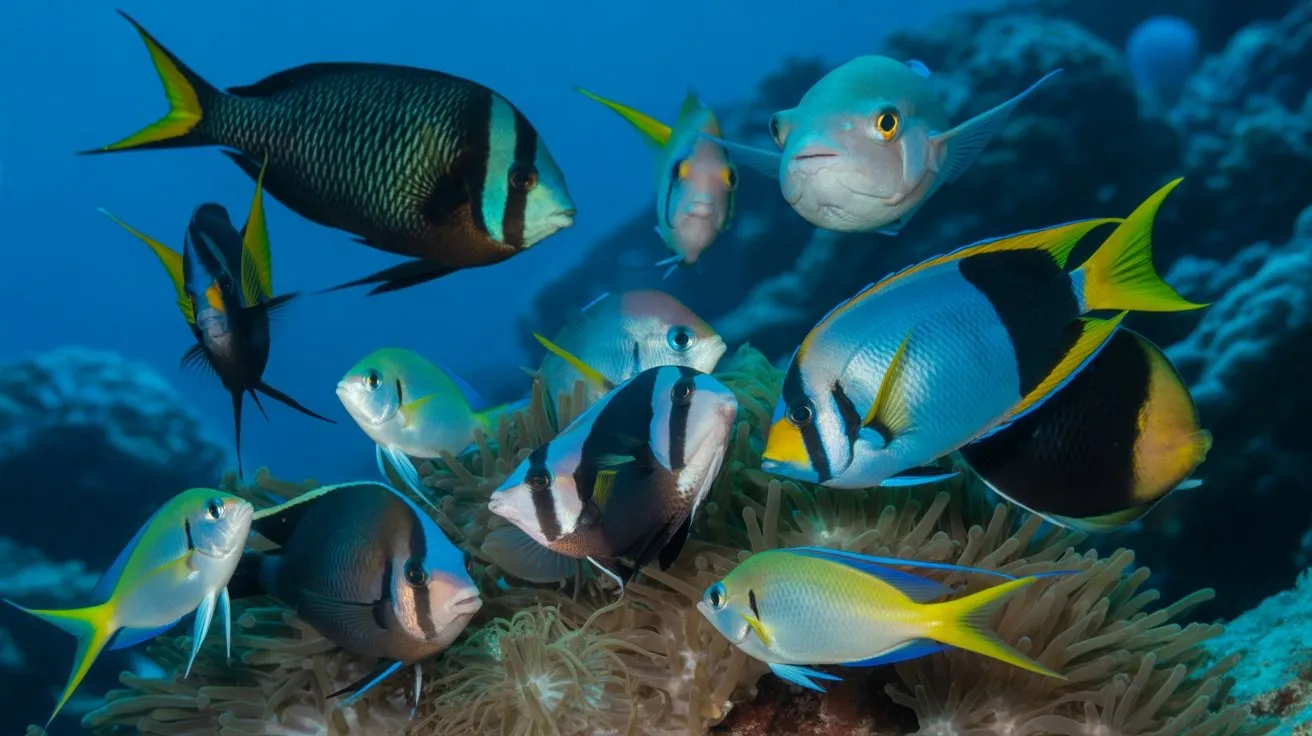
Client fish exhibit distinct taxonomic patterns in their utilization of cleaning services, with predatory species demonstrating the highest visitation frequencies at established stations.
You’ll observe groupers, sharks, and barracuda regularly positioning themselves at cleaning stations, despite their predatory nature. These large-bodied fish accumulate significant parasite loads and benefit substantially from ectoparasite removal.
Reef fish including parrotfish, surgeonfish, and angelfish constitute secondary client groups.
You’ll notice their cleaning behaviors involve specific posturing signals—spreading fins, opening opercula, and adopting head-down orientations.
Pelagic species like manta rays and whale sharks actively seek cleaning services during migrations.
Client selectivity correlates with parasite burden, body size, and territorial range.
You’ll find that fish with larger surface areas and extensive home ranges visit stations more frequently than smaller, sedentary species.
Anatomical Adaptations for the Cleaning Trade
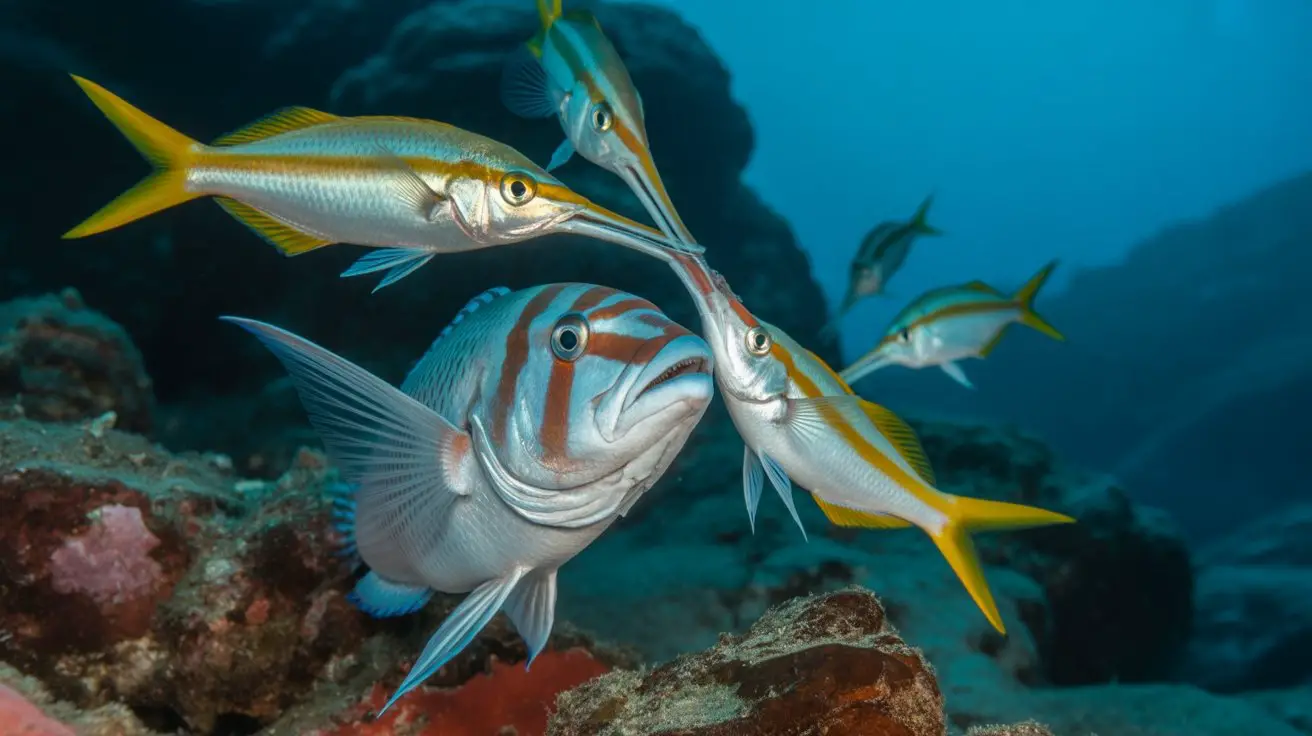
Morphological specializations enable cleaner fish to excel in their ecological niche through precise anatomical modifications that optimize parasite removal efficiency.
You’ll observe that cleaner wrasses possess elongated, narrow snouts with protrusible jaws that facilitate access to confined spaces between gill covers and fin bases. Their terminal mouths feature specialized pharyngeal teeth designed for grasping and manipulating ectoparasites.
You’ll notice their streamlined body morphology reduces drag during close-contact maneuvering around client fish. Modified fin structures provide enhanced stability and precise positioning control. Their reduced scale coverage minimizes friction during intimate cleaning interactions.
Specialized sensory systems include enlarged eyes that detect minute parasites and enhanced lateral line organs that perceive subtle water movements from clients’ respiratory currents, enabling targeted parasite localization.
Communication and Recognition Between Cleaners and Clients
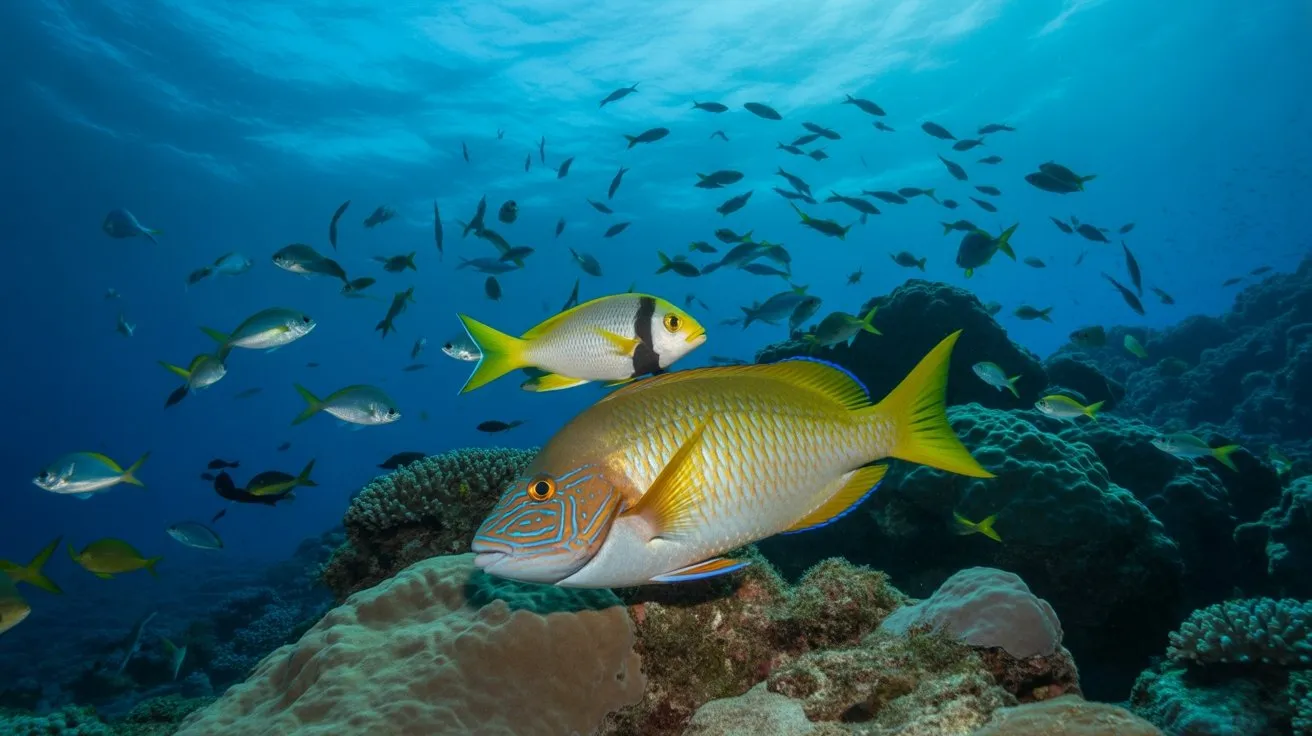
Beyond morphological adaptations, sophisticated signaling systems govern the initiation and maintenance of cleaning interactions between cleaner fish and their clients.
You’ll observe that clients signal their readiness through distinctive postures—head-down positioning, mouth agape, or motionless hovering at cleaning stations. These behavioral cues trigger cleaner recognition protocols.
Cleaners respond with tactile inspection behaviors, using specialized sensory receptors to identify ectoparasites and damaged tissue. Visual recognition patterns enable species-specific interactions; clients distinguish legitimate cleaners from aggressive mimics through coloration patterns and swimming behaviors.
Chemical communication supplements visual cues, with clients releasing pheromones that attract cleaners.
You’ll find that successful cleaning relationships depend on precise temporal coordination—clients must remain stationary while cleaners perform delicate operations around sensitive areas like gills and eyes.
Benefits and Risks in Cleaner-Client Relationships
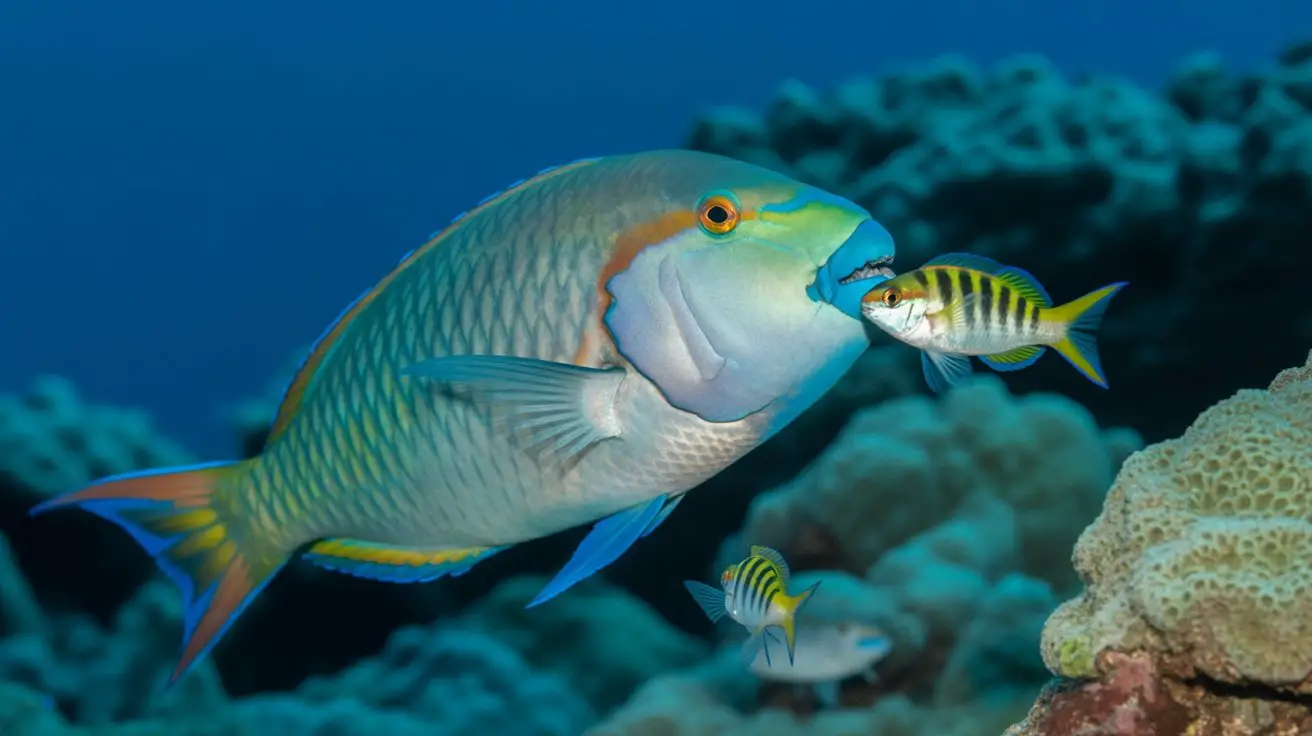
While cleaning interactions provide substantial advantages for both participants, you’ll find that these relationships also introduce significant evolutionary pressures and potential conflicts.
Cleaners obtain consistent nutrition through ectoparasite consumption and dead tissue removal, while clients receive parasite elimination and wound care.
However, you’ll observe potential for cheating behaviors—cleaners may consume healthy mucus or scales instead of parasites, causing client tissue damage. Clients face infection risks from contaminated cleaner mouthparts and potential transmission of pathogens between individuals.
Competition among cleaners creates territorial disputes at cleaning stations, while client queue formation can increase predation vulnerability.
These cost-benefit dynamics drive evolutionary adaptations including specialized morphology, behavioral modifications, and enhanced recognition systems that maintain cooperative equilibrium despite inherent conflicts.
Impact on Reef Ecosystem Health and Biodiversity
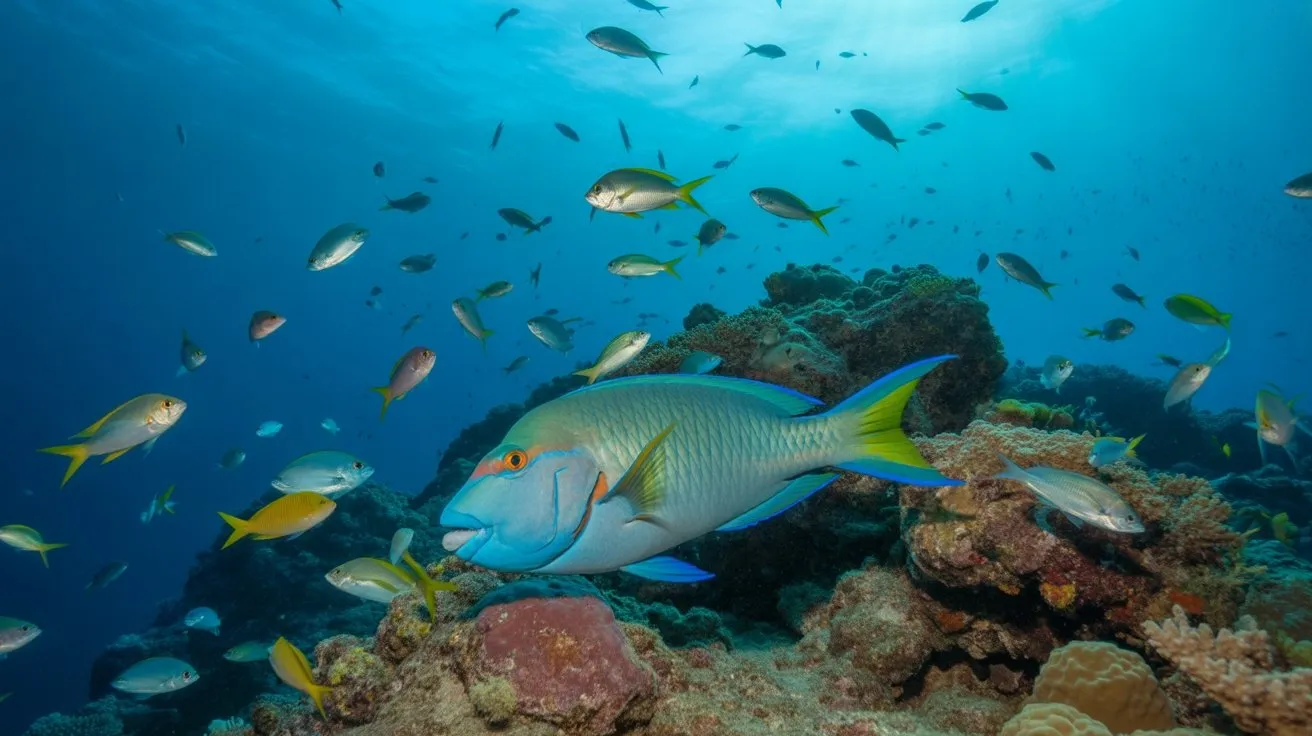
Since cleaner fish maintain direct parasitic loads across multiple reef species simultaneously, their presence creates cascading effects that fundamentally reshape ecosystem-wide health dynamics and species diversity patterns.
You’ll observe that removal of cleaner stations results in measurable declines in client fish abundance within 12-18 months, demonstrating their keystone species status. Their selective pressure on parasites drives evolutionary responses, maintaining genetic diversity within both parasite and host populations.
You’re witnessing complex feedback loops where cleaner fish density directly correlates with reef fish species richness and biomass. Their territories function as essential aggregation sites, facilitating reproduction and juvenile recruitment across multiple taxa.
Without adequate cleaner fish populations, you’ll see increased disease transmission rates and reduced ecosystem resilience to environmental stressors. Additionally, their role in maintaining nutrient cycling ensures the overall stability and health of the reef ecosystem.
Conclusion
You’ll witness cleaner fish functioning as marine healthcare providers when you observe their stations—analogous to hospitals in human cities. Research demonstrates that removing cleaner fish from reef sections reduces client fish populations by 37% within months. You’re observing obligate mutualists whose specialized morphology and behavioral repertoires maintain ecosystem homeostasis. When you consider their neurochemical communication pathways and parasitic load reduction capabilities, you’re examining keystone species whose absence cascades through entire trophic networks, compromising reef resilience.
